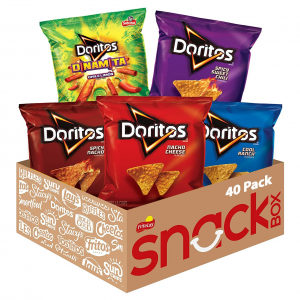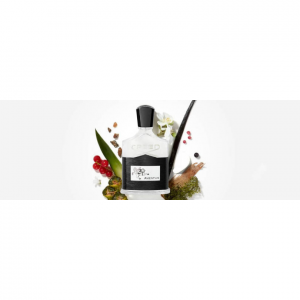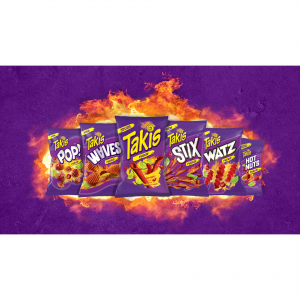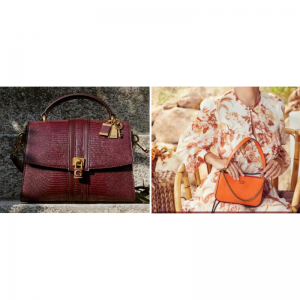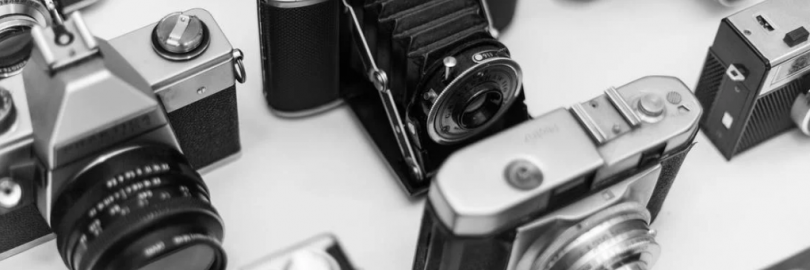
Canon vs. Nikon vs. Sony vs. Fujifilm: Which Brand Wins the Camera Showdown?
- If you're scouring the market for a camera, chances are that the 4 names you have come across most often are Canon, Nikon, Sony and Fujifilm: all these 4 brands offer a wide range of cameras and lenses across all budgets. However, which camera brand is better? Which is the No 1 camera brand? Which is best Canon or Sony? Which is better Fujifilm or Sony? What camera brand has the best quality? What camera brand has best image quality? Read on to find out which is the better camera brand in the battle of Canon vs. Nikon vs. Sony vs. Fujifilm.
About Canon

History
The origins of Canon date back to the founding of Precision Optical Instruments Laboratory in Japan in 1933 by Takeshi Mitarai, Goro Yoshida, Saburo Uchida and Takeo Maeda. It became the company Precision Optical Instruments, Co., Ltd. in 1937.
During its early years the company did not have any facilities to produce its own optical glass, and its first cameras incorporated Nikkor lenses from Nippon Kogaku K.K. (the later Nikon Corporation).
Now,Canon's products include cameras (including compact digital camera, video camera, film SLR and digital SLR), camcorders, lenses, broadcasting equipment and solutions (such as free viewpoint solution), professional displays, projectors, manufacturing equipment (including photolitography equipment such as steppers, scanners), printers, photocopiers, image scanners, digital microfilm scanners, fax machines, binoculars, microscopes, medical equipment (including diagnostic systems such as ultrasound, X-ray, CT and MRI scanners and ophthalmic equipment), CCTV solutions, image sensors, calculators, high precision positioning and measurement devices (such as rotary encoders), custom optical components, handy terminals, mixed reality systems, software, and space satellites.
Canon Camera Review
While Canon manufactures a wide range of imaging products, from printers to MRI machines, it's perhaps best known for its popular selection of cameras and lenses. Canon's long history of producing high-quality lenses and cameras makes it a trusted favorite among professional photographers and enthusiasts.
It also offers a range of more accessible and affordable cameras for beginners. In general, Canon cameras offer great ergonomics, easy-to-use menu systems, and very good image quality, along with a wide selection of lenses that cater to all kinds of photography.
Its lineup ranges from beginner DSLRs like the Canon EOS Rebel T7 / EOS 2000D to popular professional models like the Canon EOS 5D Mark IV. In recent years, Canon has moved increasingly into the mirrorless market with models like the affordable, entry-level Canon EOS M50 or full-frame options like the portable Canon EOS RP.
Where to Buy Canon Cameras?
Canon (2.5% super cash back)
Best Buy (0.5% super cash back)
B&H Photo Video (1.5% super cash back)
Amazon (Cashback temporarily unavailable)
Money Saving Tip:
If you like online shopping, don't forget to sign up at Extrabux!(What is Extrabux) , then you can enjoy up to 30+% cashback on your purchase from Extrabux! Sign-Up Bonus: Free to join it & get $20 welcome bonus! Student Benefits:As long as you are a student at school, you can get a free whole year long VIP Card worth $199.
You can save on buying daily necessities, outdorr gear,fashion, beauty, electronic products, broadband installation, mobile communication, air tickets, hotels and other aspects of life!
Extrabux.com cooperates with many merchants, such as: Walmart (Up to 4% cashback), Sephora(4% -5% cash back),Dior (Up to 6% cash back), Moosejaw (5% -6% cash back), LOOKFANTASTIC (Up to 10% cash back), Microsoft (Up to 7% cash back) and so on.
The Best Canon Cameras 2024
#Canon EOS R5:Best overall Canon camera
Price and where to buy:$3,899 @ Canon

Canon's EOS R5 is an excellent camera for professionals or anyone that's looking for a supremely capable option for almost any type of photography, from sports and action to studio portraits and landscapes.
It's a 45MP full-frame mirrorless camera that can shoot clips of 8K video, has impressive Dual Pixel autofocus and excellent ergonomics. It can also capture 10-bit HDR stills and video for HDR display and is the spiritual (and mirrorless) successor to Canon's 5D-series DSLR cameras.
Key Specifications
Sensor: Full-frame CMOS
Megapixels: 45
Autofocus: 5,940-zone AF
Screen type: 3.15-inch tilting touchscreen, 2.1m-dots
Continuous shooting speed: 20fps
Movies: 8K
User level: Enthusiast / expert
Size, weight: 135.8 x 97.5 x 88mm, 738g with card and battery
Advantages and Disadvantages
| Pros | Cons |
|
|
#Canon EOS M50 Mark II:Best Canon Camera for Beginners
Price and where to buy:$699 @B&H Photo Video

Canon’s EOS M50 Mark II is a confusing little camera – while it is feature-packed, it’s only a very minor update on the first EOS M50 camera. Other than the addition of eye AF and the ability to shoot vertical video, there’s not really a whole lot different between the two versions.
So while we wouldn’t recommend owners of the EOS M50 to upgrade to the newer model, it’s great for those just starting out on their photography and content creation journeys.
Key Specifications
Type: Mirrorless
Sensor size: APS-C CMOS
Resolution: 24.1MP
Effective focal length: N/A
Viewfinder: EVF, 2.36 million dots
Monitor: 3.0-inch vari-angle touchscreen, 1.04 million dots
Connectivity: Wi-Fi, NFC and Bluetooth
Max movie resolution: 4K
Size, weight: 116 x 88 x 59mm, 390g
Advantages and Disadvantages
| Pros | Cons |
|
|
About Nikon

History
Nikon Corporation was established on 25 July 1917 when three leading optical manufacturers merged to form a comprehensive, fully integrated optical company known as Nippon Kōgaku Tōkyō K.K. Over the next sixty years, this growing company became a manufacturer of optical lenses (including those for the first Canon cameras) and equipment used in cameras, binoculars, microscopes and inspection equipment.
Between 1983 and the early 2000sa broad range of compact cameras were made by Nikon. Nikon first started by naming the cameras with a series name (like the L35/L135-series, the RF/RD-series, the W35-series, the EF or the AW-series). In later production cycles, the cameras were double branded with a series-name on the one and a sales name on the other hand.
Nikon also manufactures eyeglasses, sunglasses, and glasses frames, under the brands Nikon, Niji, Nobili-Ti, Presio, and Velociti VTI. Other Nikon's products include ophthalmic equipment, loupes, monoculars, binocular telescopes, metal 3D printers, material processing equipment, regenerative medicine contract manufacturing, cell sorting equipment, and cell culture observation systems.
Nikon Camera Review
Nikon is another top camera brand with a long history of producing optical devices, cameras, and lenses. Nikon was one of the pioneering manufacturers of digital cameras throughout the 1990s and continues to hold its own against competitors like Canon.
In recent years, Nikon has similarly been moving more and more into the realm of mirrorless cameras, though it's still primarily known for its DSLRs, from the easy-to-use Nikon D3500 to well-regarded professional models like the Nikon D850, as well as consumer point-and-shoots.
Its mirrorless lineup has steadily improved, and the company now offers mirrorless models to suit different experience levels, including the entry-level Nikon Z 50, the retro-inspired Nikon Z fc, and the full-frame Nikon Z 6II. Nikon is known for pushing boundaries with some of its cameras, like the Nikon COOLPIX P1000, which has the longest fixed zoom lens on the market.
Where to Buy Nikon Cameras?
Nikon (Cashback temporarily unavailable)
Best Buy (0.5% super cash back)
Walmart (4% super cash back)
B&H Photo Video (1.5% super cash back)
The Best Nikon Cameras 2024
#Nikon Z 6II: Best Nikon Mirrorless Camera
Price and where to buy:$2,199.95@ Nikon

The Nikon Z6 II is an updated version of the company's 24MP multimedia full-frame mirrorless camera. It gains more processing power to add improved autofocus and a few other tweaks to an already well-rounded feature set.
Its video quality is okay overall, and its in-body video stabilization feature does a good job of smoothing out camera shake.
Key Specifications
Sensor size: Full-frame
Resolution: 24.5MP
Viewfinder: EVF
Monitor: 3.2-inch tilt-angle touchscreen, 2,100K dots
Maximum continuous shooting rate: 14fps
Movies: 4K
User: Intermediate
Size, weight: 134 × 101 × 70 mm, 705 g(includes battery and card)
Advantages and Disadvantages
| Pros | Cons |
|
|
#Nikon Z5 Mirrorless Camera: Best Nikon Camera For Beginners
Price and where to buy:$1296.95 @B&H Photo Video

The Nikon Z5 is an entry-level full-frame mirrorless camera that looks and handles almost exactly like its higher-end Z-mount siblings, the Z6 and Z7. It's built around a stabilized non-BSI 24MP CMOS sensor, which is likely more closely related to the generation of chip found in Nikon's D750 DSLR, rather than the newer BSI sensor in the Z6.
Slightly stripped down and more stills-focused, the Z5 shares the same 273-point hybrid AF system, Expeed 6 processor and 3.69M-dot OLED viewfinder as the Z6. But niceties like a top plate display are absent.
Key Specifications
Sensor size: Full-frame CMOS
Resolution: 24.3MP
Viewfinder: EVF, 3,690K dot
Monitor: 3.2-inch tilt-angle touchscreen, 1,040K dots
Maximum continuous shooting rate: 4.5fps
Movies: 4K/30p
User: Intermediate
Size, weight: 134 x 101 x 70 mm,675g (with card and battery)
Advantages and Disadvantages
| Pros | Cons |
|
|
About Sony

History
In 1946, Tokyo Tsushin Kogyo K.K. (Tokyo Telecommunications Engineering Corporation, The predecessor of Sony Group Corporation)started as a small company with capital of just 190,000 yen and approximately 20 employees.
Founder Masaru Ibuka said the purpose of setting up the company was to "establish an ideal factory
that stresses a spirit of freedom and open mindedness that will, through technology, contribute to Japanese culture."
Symbolizing Sony's spirit of challenge to "do what has never been done before,"
the company has continued to release countless "Japan's first" and "world's first" products.
Sony Camera Review
Widely known for its TVs, soundbars, headphones, and speakers, Sony has been producing cameras since the 1990s. Since acquiring Konica Minolta in 2006, the company has continued to expand its digital camera offerings and has become the third-largest camera manufacturer in the world behind Canon and Nikon.
Sony has roots in manufacturing electronic components like semiconductors and image sensors and is one of the world's largest manufacturers of image sensors; many cameras from other brands feature Sony-built sensors. Sony focuses primarily on mirrorless cameras under its Alpha brand name, but it offers point-and-shoot cameras in its Cyber-shot lineup. Their cameras are known for their snappy, highly effective autofocus systems and portable bodies.
It's one of the few brands to release the specifications for its proprietary lens mount, giving users a wider variety of third-party lenses to choose from within Sony's E-mount mirrorless system.
Where to Buy Sony Cameras?
Sony (Cashback temporarily unavailable)
Adorama (8% super cash back)
Best Buy (0.5% super cash back)
B&H Photo Video (1.5% super cash back)
The Best Sony Camera 2024
#Sony α7 IV: Best Full Frame Sony Camera
Price and where to buy:$2499.99 @Bestbuy

The Sony A7 IV is the best hybrid mirrorless camera you can buy right now. A truly modern all-rounder that largely justifies its price tag, it packs class-leading autofocus, impressive image quality and powerful video features into one versatile body.
Dedicated street or sports photographers should look elsewhere, and it isn't the fastest shooter in its class. But for everyone else, the A7 IV is a rock-solid all-rounder with few glaring weaknesses. It might be the only camera you ever need.
Key Specifications
Type: Mirrorless
Sensor: Full-frame CMOS
Megapixels: 33MP
Lens mount: Sony E
Autofocus: 759 phase detection points
Screen type: 3-inch vari-angle touchscreen, 1,037,000 dots resolution
Max burst speed: 10fps
Video: 4K
User level: Enthusiast
Size, weight: 131.3 x 96.4 x 79.8mm,658g (with card and battery)
Advantages and Disadvantages
| Pros | Cons |
|
|
#Sony ZV-1: The best compact vlogging camera around
Price and where to buy:$748 @B&H Photo Video

The Sony ZV-1 is a 20MP compact camera geared towards vlogging. It has a new and novel directional microphone next to the flash hotshoe and there's a fully articulating touchscreen display. The ZV-1 shoots in 4K up to 30p and Full HD up to 120p and features a 24-70mm equivalent F1.8-2.8 lens.
Although the Sony ZV-1 is designed specifically with vloggers in mind, it’s quite capable as a conventional compact stills camera too. If you're a hybrid shooter who is interested in capturing both video and stills, but doesn’t want to carry around two cameras, the ZV-1 has a lot to offer.
Key Specifications
Type: Compact
Sensor size: 1-inch
Resolution: 20.1MP
Effective focal length: 24-70mm
Viewfinder: None
Monitor: 3.0-inch vari-angle touchscreen, 0.921-million dots
Connectivity: Wi-Fi, Bluetooth
Max movie resolution: 4K 30p
Size, weight: 105.5 x 60.0 x 43.5 mm, 294g
Advantages and Disadvantages
| Pros | Cons |
|
|
About Fujifilm

History
Fuji Photo Film Co., Ltd. was established in 1934 as a subsidiary of Daicel with the aim of producing photographic films. Over the following 10 years, the company produced photographic films, motion-picture films and X-ray films. In the 1940s, Fuji Photo entered the optical glasses, lenses and equipment markets. After the Second World War, Fuji Photo diversified, penetrating the medical (X-ray diagnosis), printing, electronic imaging and magnetic materials fields. In 1962, Fuji Photo and UK-based Rank Xerox Limited (now Xerox Limited) launched Fuji Xerox Co., Ltd. through a joint venture.
Along with photographic film, the company also started producing motion picture films and X-ray films. On top of that, it also stepped into the optical glasses, lenses, and equipment market. Its business further continued to grow as Fujifilm. Later on, the company also entered the sector of printing, magnetic materials, and electronic imaging after the Second World War.
Fujifilm Camera Review
Fujifilm started as a film manufacturer in the early twentieth century until it eventually began producing cameras of its own in the late 1940s under the 'Fujica' moniker. Fujifilm was one of the most successful camera companies to transition from film to digital, and it's now one of the leading producers of APS-C mirrorless cameras as well as increasingly affordable medium format cameras.
Its X-series lineup includes entry-level models like the Fujifilm X-T200, mid-range models like the Fujifilm X-T30, and even vlogger-oriented models like the Fujifilm X-S10. The company also produces high-end compact cameras like the Fujifilm X100V. What unites many of these models is the brand's emphasis on retro styling, extensive physical controls, and excellent color science and in-camera processing.
Where to Buy Fujifilm Cameras?
Fujifilm (Cashback temporarily unavailable)
Walmart (4% super cash back)
Best Buy (0.5% super cash back)
B&H Photo Video (1.5% super cash back)
The Best Fujifilm Camera 2024
#Fujifilm X-T4: Best Fujifilm Camera
Price and where to buy:$2199.99 @Bestbuy

The Fujifilm X-T4 is the best APS-C mirrorless camera you can buy right now. There’s enough here to persuade both photographers and filmmakers over the X-T3, including the significantly improved battery life, in-body image stabilization, quieter shutter, and design tweaks that make a big difference to the handling.
The X-T4's design is both charming and intuitive, while its class-leading photo and video specs are backed up by powerful performance. This is truly two cameras in one, and very fine hybrid all-rounder.
Key Specifications
Type: Mirrorless
Sensor: APS-C
Megapixels: 26.1MP
Lens mount: Fujifilm X
Screen: 3in articulating touchscreen, 1,620k dots
Viewfinder: EVF, 3.69 million dots
Max continuous shooting speed: 30/15fps
Max video resolution: 4K
User level: Expert/professional
Size, weight: 134.6 x 92.8 x 63.8mm , 607g (including battery and SD memory card)
Advantages and Disadvantages
| Pros | Cons |
|
|
#Fujifilm X100V:Best Classically Designed Compact Camera
Price and where to buy:$1399 @B&H Photo Video

The perfect compact camera for the smartphone age, the X100V is a great street photography sidekick that takes the series to new heights. Its tilting screen brings some welcome versatility, while the new sensor, autofocus system and viewfinder make it a fun, engaging travel camera. The fixed focal length won't be for everyone and it's relatively pricey, but the X100V is the best premium compact you can buy.
X100V might just be the most advanced, APS-C fixed lens camera on the market and certainly aimed at enthusiasts but its slick design and up-to-date features don't come cheap.
Key Specifications
Type: Compact
Sensor: APS-C
Megapixels: 26.1MP
Lens: 35mm f/2 (effective)
Screen: 3in tilting LCD, 1,620k dots
Viewfinder: Optical + 3,690k-dot EVF
Max continuous shooting speed: 20 / 11fps
Max video resolution: 4K
User level: Enthusiast
Size, weight: 128 x 75 x 53 mm,478g
Advantages and Disadvantages
| Pros | Cons |
|
|
Canon vs. Nikon vs. Sony vs. Fujifilm: Comparison Side by Side
1.Pros and cons
You can weigh the pros and cons of Canon vs. Nikon vs. Sony vs. Fujifilm to help with your decision.
Canon
Canon cameras stand out in the following areas.
| Pros | Cons |
|
|
Nikon
Nikon cameras, meanwhile, have a different set of pros and cons.
| Pros | Cons |
|
|
Sony
| Pros | Cons |
|
|
Fujifilm
| Pros | Cons |
|
|
2.Build Quality and Design
Canon
Canon assembles and makes almost all of its cameras in Japan, even the cheaper ones. Canon lenses are also completely made in Japan, unlike Nikon.
Due to this, the entry-level and mid-range Canon cameras do tend to be superior when it comes to build quality.
Nikon
Most Nikon cameras are manufactured in China or Thailand, with only the most expensive models made in Japan.
Nikon's lenses use more plastic parts, whereas Canon makes judicious use of metal.
Sony
Sony’s menu systems are frequently more complex; however, this is partially due to the numerous options available, particularly for video settings.
Fujifilm
When it comes to Fujifilm vs Sony, Fujifilm wins this section also. I would say that Sony unfortunately is getting more heavy which if you are switching from a DSLR to something more compact and travel-friendly, this would be a huge downside to picking Sony. The lack of updates in Sony and the lack of weather-sealing also plays a big problem in design as well.
3.Image and Video Quality
Since all 4 brands compete so closely against each other, it is unlikely you will find any major difference between the photographs shot by Nikon, Canon,Sony or Fujifilm cameras.
Canon vs. Nikon
When it comes to high-ISO performance, Nikon is slightly ahead of Canon. In fact, the ISO on Nikon's flagship camera, the Nikon D6, can be dialed all the way up to 3,280,000, resulting in better performance in dark conditions.
All in all, if you're someone who shoots at night, Nikon will offer you better quality images. In any other scenario, both Canon and Nikon stand shoulder to shoulder.
Sony vs. Fujifilm
Fujifilm cameras come with built-in stabilization, but it's not such a common thing for Nikon cameras to have. Its DSLR cameras don't use this, nor does the Z fc. However, some Nikon models—like the Z9—use this feature.
Many Nikon lenses use vibration reduction (VR), and so do some of Fujifilm's.
4.Lenses
Canon
Canon has always been marginally ahead of the game.Canon’s mirrorless systems don’t have many native lenses at the moment, its DSLR camera lenses can be simply converted to both M and R cameras without compromising performance or quality.
Nikon
Both Nikon and Canon offer a wide variety of lenses at all price points. However, Canon's foray into lenses was with premium ultra-expensive lenses, whereas Nikon initially had budget offerings.
Both Nikon and Canon have options for all popular focal lengths. Both brands also make lenses that cater to very specific needs
Sony
Sony has fewer lenses to pick from because it has a shorter history of making interchangeable lens cameras, but it still has quite a number.
Sony currently has all of the key lenses that most photographers need. However, specialty lenses, such as tilt-shifts may be unavailable.
Fujifilm
In the long run, the camera will last you a lot longer and if or when you decide to upgrade all the investments when it comes to lenses will transfer over. I think sony is great as a point-and-shoot camera along with people wanting to do more video for their travels.
Fujifilm does do video, but there has been a consensus that Sony is easier to work within creating videos.
5.Performance
Canon
Canon uses a technology called Dual Pixel Autofocus, or DPAF, on its mirrorless cameras and its DSLRs when used in live view mode. This is a type of phase-detection autofocus, and it’s very fast and accurate.
One advantage of Canon’s system is the sheer number of focus points that are possible, with the EOS R having over 5,000.
Nikon
When it comes to high-ISO performance, Nikon is slightly ahead of Canon. In fact, the ISO on Nikon's flagship camera, the Nikon D6, can be dialed all the way up to 3,280,000, resulting in better performance in dark conditions.
Some Nikon cameras have a high dynamic range (HDR) setting that you can tweak to alter how your images look.
Sony
Sony also uses phase-detection in its mirrorless cameras, and while its cameras may not have as many focus points, Sony has had many more years to refine its mirrorless focusing systems.
Its latest cameras stand out thanks to a system called Real-Time Tracking and Real-Time Eye AF which provide excellent subject recognition and tracking capabilities. It’s the most reliable autofocus we’ve seen on a mirrorless camera.
Fujifilm
Fujifilm cameras have a dynamic range setting that lets you choose whether you want them to stand at 100%, 200%, or 400%. Alternatively, you can set this to auto and let the camera do the work.
And the shutter speed range can impact how much you can do with your camera. The Fujifilm XT-4 has a shutter speed range of 30 seconds to 1/8000th of a second, while the XT-30's in manual mode goes from 15 minutes up to 1/4000.
6.Price
When picking a camera, pricing is one of the most important factors to consider. Much of this will depend on the model you choose; mirrorless cameras are often more expensive than their DSLR counterparts.
Canon
Canon largely dominates the APS-C DSLR and mirrorless market for beginners and hobbyists, if only because of its sheer number of cameras and the fact these keep on coming – though often with last year's tech at knock-down prices.
Nikon
Nikon has an extensive range of cameras at different price points. If you want to get a basic DSLR, you can expect to pay anywhere from just below $300 to a little over $400. But for high-end DSLRs, such as the D6, the price goes way above $5,000.
Sony
Sony has an amazing price and is great for a lot of reasons, if budget is one of them then I do suggest sticking to Sony vs Fujifilm. You can easily learn how to use a Sony and upgrade to something better later down the road. It’s great for beginners and I would suggest it to anyone wanting a compact camera with a good value.
Fujifilm
Fujifilm's mirrorless cameras tend to cost a lot, but the price differences aren't necessarily huge. The XT-30, for example, costs around $900—whereas the XT-4 will set you back around $1,700. Meanwhile, you can get DSLR Fujifilm cameras for less than $300 in many instances.
The Verdict:Which Brand is Best for You?
A comparison between Canon,Nikon,Sony and Fujifilm is always difficult, because all four brands have been in the market for many years.
Canon largely dominates the APS-C DSLR and mirrorless market for beginners and hobbyists, if only because of its sheer number of cameras and the fact these keep on coming – though often with last year's tech at knock-down prices.
Nikon’s DSLR range is competent but hasn’t seen much development.If you want a mirrorless camera rather than a DSLR, Canon has this won at the lower end of the market, but for more advanced users the new Nikon Z50 could prove both cheaper and better than its closest Canon rival, the EOS M6 Mark II, provided Nikon starts rolling out more DX format lenses for it.
Sony is great as a point-and-shoot camera along with people wanting to do more video for their travels. Fujifilm does do video, but there has been a consensus that Sony is easier to work within creating videos.
Fujifilm is overall great under harder weather conditions like rain and snow which made so many people switch over and choose Fujifilm over its competition Sony. However, if you plan to do more adventure travels then the Fujifilm camera will be better in terms of weatherproofing.
Conclusion:
That doesn’t mean you should just eenie-meanie-minie-mo your decision between the two brands, however. Start by determining what features are most important to you — like speed, autofocus, video, ergonomics, or price — and the type of camera you are looking for. Then compare competing models from both brands that hit all or most of the features that you need. Check to make sure the brand you are leaning for has the lenses you want.
Related Read:
Top 12 Cameras for Live Streaming on YouTube, Facebook and IG in 2024
Top 7 Vlogging Cameras for Beginners in 2024
GoPro HERO 10 vs. DJI Osmo Action vs. iPhone 13 Pro Camera: Comparison & Verdict 2024

Extrabux is an international cashback shopping site, offering up to 30% cashback from 10,000+ Stores!
B&H Photo Video, Dyson, Woodland Direct, Ooni UK, Bed Bath and Beyond, TUSHY, Zoro, Anthropologie, 4seating.com, GDF Studio, simplehuman, Appliance Parts Pros, etc.
Join to get $20 welcome bonus now! (How does Welcome Bonus work?)
Recommendation
-
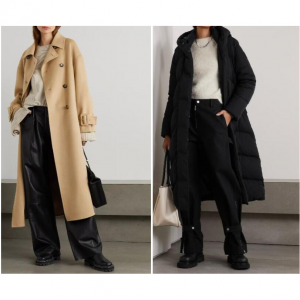
10 Best & Stylish Winter Coats for Women on NET-A-PORTER in 2024
-

Top & Best 12 Sneaker Apps/Websites for Raffles, Releases & Restocks in 2024
-

7 Best Gift Card Exchange Sites - Buy, Sell and Trade Discount Gift Card Safely and Instanly!
-

Top 9 Professional Skincare Brands for Licensed Estheticians 2024
-

13 Best Luxury Online Shopping Sites with Highest Cashback in 2024 (Coupon Code+Sale+14% Cashback)
Up to 14% Cashback!




